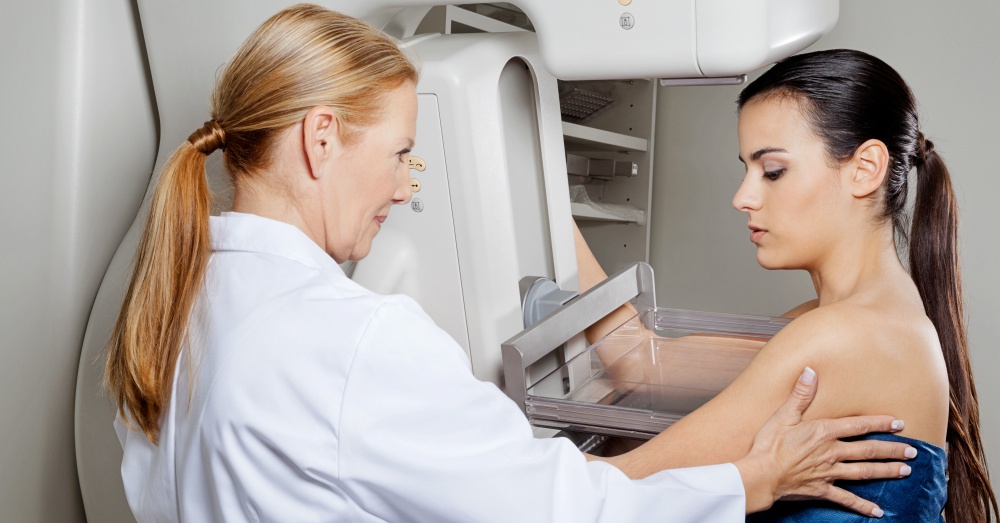
Breast Cancer Stages: The Numbers, The Letters, And The Lingo
Understanding a breast cancer diagnosis can feel a bit like learning a new language. Ductal Carcinoma In Situ, Tubular Carcinoma, Paget’s Disease of the Breast… and then of course there are different stages for each type, and different systems that doctors use to talk about the stages. You may start to feel like you’re ordering something from an auto-parts store: “Yes, I have a stage 2 invasive papillary carcinoma and I’m looking for a partial mastectomy with sentinel lymph node dissection as well as external beam radiation therapy. Do you have that in stock?”
Let’s break it down step by step. Here we’ll talk about how the stages of cancer are determined, the traditional numbers staging system versus the TNM system, and the definitions of some common cancer-related terms.

The Staging Process
The staging process gives your medical team a common language to accurately describe a specific person’s cancer and quickly understand its progression and prognosis. Breast cancer is assigned a stage 0 through IV, and the stage is determined by the size of the tumor, if the cancer is invasive or non-invasive, if the cancer has spread to the lymph nodes, and if the cancer has spread to other parts of the body.

Stage 0
Stage 0 cancer is also called “carinoma in situ”; the term in situ means that the cancer hasn’t spread from its original origin. Stage 0 may or may not ever become invasive. The three possible types of stage 0 are: ductal carcinoma in situ (DCIS), lobular carcinoma in situ (LCIS), and Paget disease of the nipple.
DCIS is the most common stage 0 cancer. In DCIS, non-invasive abnormal cells have been detected in the lining of the milk ducts, but have not yet spread. Some patients choose active surveillance instead of surgery as treatment, and the five-year survival rate for stage 0 is close to 100 percent.
LCIS is not usually considered cancer as it describes a growth of abnormal, non-invasive cells contained in the ducts or lobules of the breasts.

Stage I
The main difference between stage 0 and stage I cancer is that stage I is invasive—the cancer has now start to spread beyond its original origin, and subcategories are now needed:
Stage IA tumors are up to 2 centimeters in size, the cancer has not spread beyond the breast, and no lymph nodes are affected.
Stage IB means one of two things: No tumor is present in the breast, but small groups of cancer cells (smaller than 2 millimeters) are found in the lymph nodes. Or there is a tumor in the breast 2 centimeters or smaller AND there are small groups of cancer cells (smaller than 2 millimeters) in the lymph nodes.

Stage II
Stage II is also invasive cancer that’s subdivided into further categories, but it starts to get a little more complicated.
Stage IIA means one of these things:
- There is no tumor in the breast, but there is a cancer presence over 2 millimeters in 1 to 3 of the lymph nodes under the arm (axillary lymph nodes) or in the lymph nodes near the breast bone.
- There is a tumor in the breast 2 centimeters or smaller and the cancer has spread to nearby (axillary) lymph nodes.
- The cancer has not spread to the nearby lymph nodes, but the breast tumor is larger than 2 centimeters (but not larger than 5 centimeters).
Stage IIB means one of these things:
- The cancer tumor is bigger than 2 centimeters but smaller than 5, AND small groups of breast cancer cells are in the lymph nodes.
- The tumor is between 2 and 5 centimeters, has spread to 1 to 3 axillary (arm) lymph nodes or lymph nodes near the breastbone.
- Cancer has not spread to axillary lymph nodes but the tumor is larger than 5 centimeters.

Stage III
Stage III becomes increasingly more complicated and has three subcategories:
Stage IIIA means one of these things:
- There may or may not be a tumor in the breast of any size, but cancer is present in 4 to 9 axillary lymph nodes or in the lymph nodes near the breastbone.
- The breast tumor exceeds 5 centimeters and there are small groups of cancer cells (smaller than 2 millimeters) in the lymph nodes.
- The breast tumor exceeds 5 centimeters and cancer is present in 1 to 3 axillary lymph nodes or in lymph nodes near the breastbone.
Stage IIIB means one of these things:
- The cancer tumor can be any size and has spread to the chest wall and/or skin of the breast. There is swelling or an ulcer present and the cancer has either spread to up to 9 axillary lymph nodes OR lymph nodes near the breast bone.
- Inflammatory breast cancer is considered stage IIIB and typically includes reddening of breast skin, swollen or warm breast tissue, cancer cells in lymph nodes and possibly the skin.
Stage IIIC means that there may or may not be a tumor of any size present in the breast, and any tumor may have spread to the chest wall or skin of the breast. There is cancer present in 10 or more axillary lymph nodes OR cancer is present in lymph nodes above or below the collarbone OR the cancer has spread to axillary lymph nodes or lymph nodes near the breastbone.

Stage IV
Stage IV cancer means that the breast cancer has now spread to other organs beyond the breast and lymph nodes. It may be referred to as advanced or metastatic cancer. A person may receive a stage IV diagnosis when they first learn they have cancer or when previous cancer returns.
Stage IV is considered terminal, but treatment is available that may extend someone’s life for several years.

The TNM Staging System
The TNM staging system is used to provide a medical team with even more information about how a cancer case manifests and spreads. The “T” stands for tumor, the “N” stands for node and refers to lymph node involvement, and “M” stands for metastasis and denotes whether or not the cancer has spread to other parts of the body. More specifically:
TX refers to a tumor that can’t be found and T0 means there is no evidence of a primary tumor. If a tumor is in situ, it will be noted as Tis. Categories T1 through T4 refer to the size of the tumor and how much it has grown into neighboring breast tissue. The higher the number, the larger the tumor.
The “N” follows a similar system. NX refers to lymph nodes where cancer can’t be measured or found, and N0 means that there is not cancer in the lymph nodes. N1 through N3 refer to how much cancer has invaded the lymph nodes.
The “M” is simpler: MX means metastasis can’t be found, M0 means there is no metastasis, and M1 means that the cancer has metastisize (that the cancer has spread to other organs).

Breast Cancer Glossary
Not even the numerical and TNM staging systems can tell the full cancer story. Here are some common terms that can help you understand a breast cancer diagnosis:
- IDC: Invasive ductal carcinoma. This is the most common type of breast cancer, comprising about 80 percent of cases. Ductal meals that the cancer began in the milk ducts in the breast. There are multiple types of IDC cancer.
- Carcinoma: This is any cancer that starts in the skin or tissues that cover internal organs, like breast tissue.
- Triple Negative: This means that cancer growth is not fed by the hormones estrogen or progesterone, nor by the presence of HER2 receptors. This means that triple negative cancer will not response to hormonal therapy and will need to be treated with other options. Approximately 10 to 20 percent of breast cancer cases are triple negative.
- Local: If breast cancer is local, it is contained within the breast.
- Regional: The breast cancer involves lymph nodes, generally those in the armpit.
- Distant: The cancer is found in other parts of the body (as in metastasis).
- Neoadjuvant therapy: This refers to treatment before surgery such as chemotherapy or hormone therapy. Neoadjuvant therapy may also be called preoperative therapy. Therapy after surgery is called adjuvant therapy.

Any breast cancer diagnosis is scary, but understanding what you or a loved one is facing can help. Be sure to ask lots of questions of your doctors and medical team—don’t stop until you feel confident that you understand what’s going on and what your options are! It’s easy to feel overwhelmed after a diagnosis, but find a team that knows how to explain things in understandable terms. Stay healthy, friends!